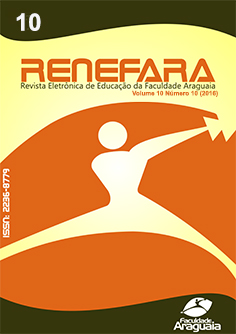DIAGNÓSTICO DOS RESÍDUOS PNEUMÁTICOS E POSSÍVEIS ALTERNATIVAS DE DESTINAÇÃO NAS REGIÕES CENTRAL, CAMPINAS E LESTE DO MUNICÍPIO DE GOIÂNIA-GO
Keywords:
Resíduos pneumáticos, pontos de coleta, logística reversa.Abstract
Com a facilidade que os automóveis nos proporcionam, ao mesmo tempo trás consequências na gestão dos resíduos pneumáticos como na coleta, transporte e destinação final. O presente trabalho objetivou diagnosticar as fontes geradoras de resíduos pneumáticos, pontos de coleta e destinação final, onde a área de estudo foi nas regiões Central, Campinas e Leste no muniípio de Goiânia. O trabalho foi desenvolvido a partir de revisão bibliográfica como estudo de resoluções que abrangem o tema resíduos pneumáticos, pelo CONAMA, além de pesquisa a campo, que constituiu-se em 4 etapas para a sua realização. Os resultados obtidos foram bastante satisfatórios para determinar a real situação em que o muniípio esta passando em relação a gestão dos resíduos pneumáticos, principalmente na questão da destinação e no que trata-se a logística reversa, feita pelos empreendimentos. Conclui-se que as possíveis alternativas de destinação dos resíduos pneumáticos para regiões Central, Campinas e Leste, se concentram ainda nos 04 pontos de coletas existentes como JLS Transportes e Serviços, Diego Pneus, Loja do Borracheiro e Omega Comércio de Pneus. É evidente que apenas estes pontos não são suficientes, destacando-se a necessidade de políticas públicas para criação de novos pontos. Esses pontos terão que ser implantados pela Reciclanip em parceria com a Prefeitura de Goiânia, por meio de acordos e Termos de Parcerias e Colaboração Mútuas.
Downloads
Published
Issue
Section
License
The copyright of the published articles will be transferred to the Uniaaraguaia Magazine, allowing its subsequent reproduction as transcription and with due citation of source. In the event of acceptance and before the publication of the article, the plaintiff (s) shall write a statement formally transferring copyright to the magazine.
The author may also print and distribute copies of his article, provided that he mentions that the rights belong to the Uniaaraguaia Magazine.
Author rights include the right to reproduce in full or partly by any means, distribute this article, including figures and photographs.
By submitting originals to the Uniaaraguaia magazine, the author or authors express agreement with the following terms:
a) Authors maintain copyright and grant Uniaraguaia magazine the right of first publication, with the work simultaneously licensed under the Creative Commons Attribution license that allows the sharing of work with recognition of the authorship and initial publication in this magazine.
b) Authors are authorized to assume additional contracts separately, for non-expiration distribution of the work version published in this magazine (eg publish in institutional repository or as book chapter), with recognition of authorship and initial publication in this journal.
c) Authors are allowed and are encouraged to publish and distribute their work online (eg in institutional repositories or on their personal page) to any point before or during the editorial process, as this can generate productive changes as well as increase the impact and citation of published work.

